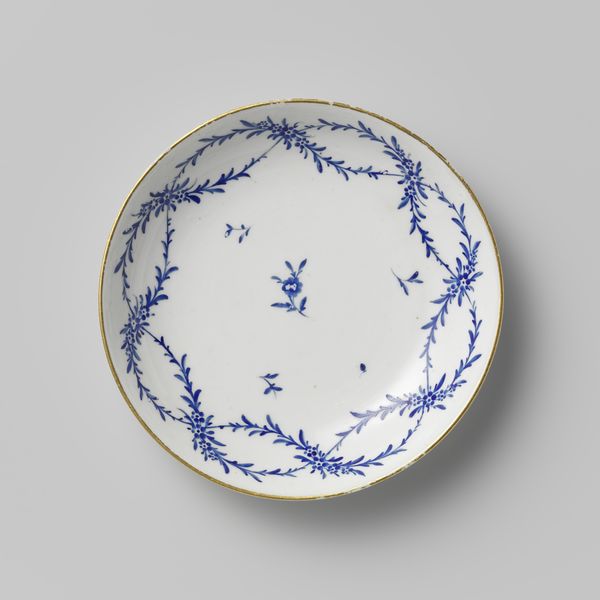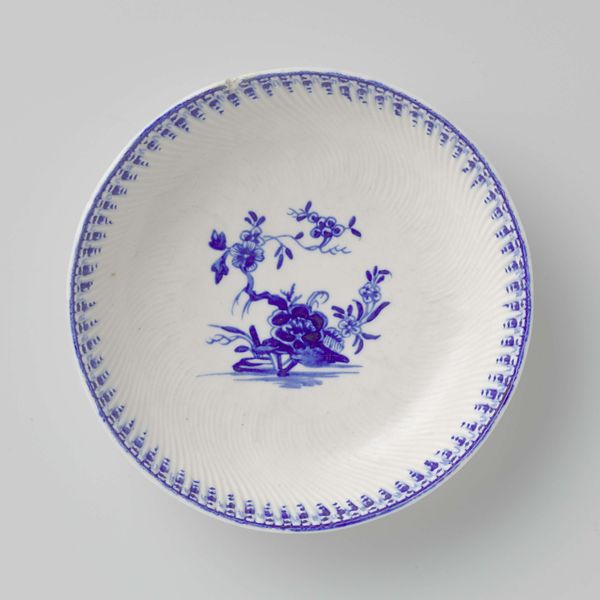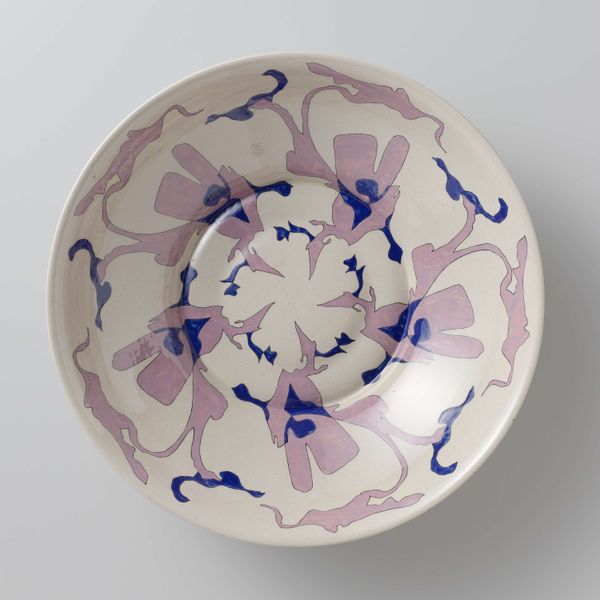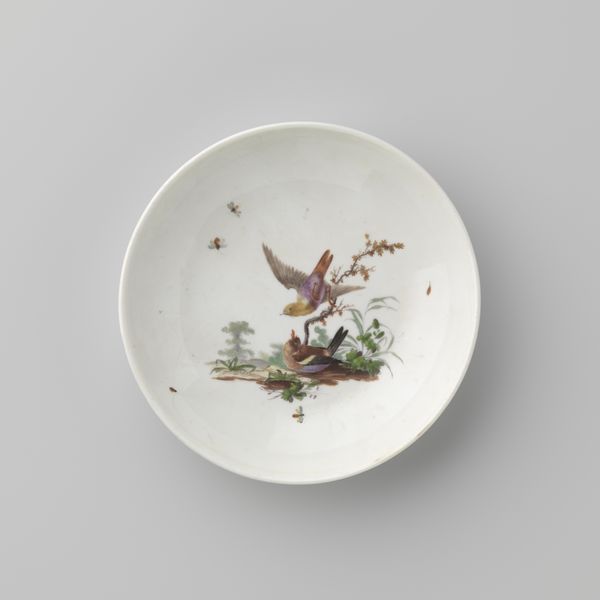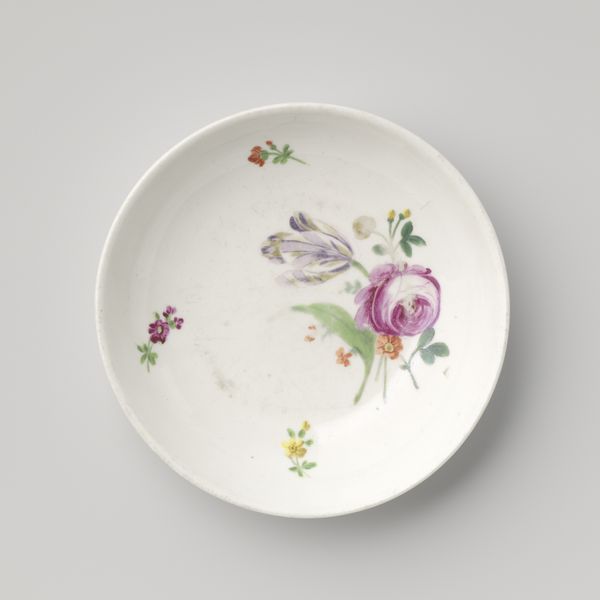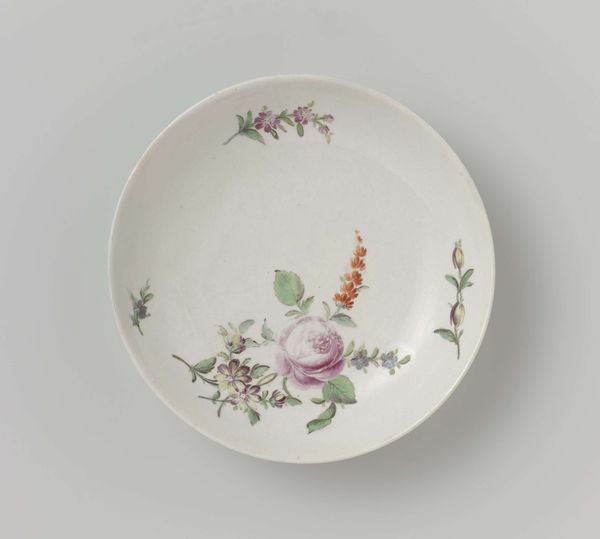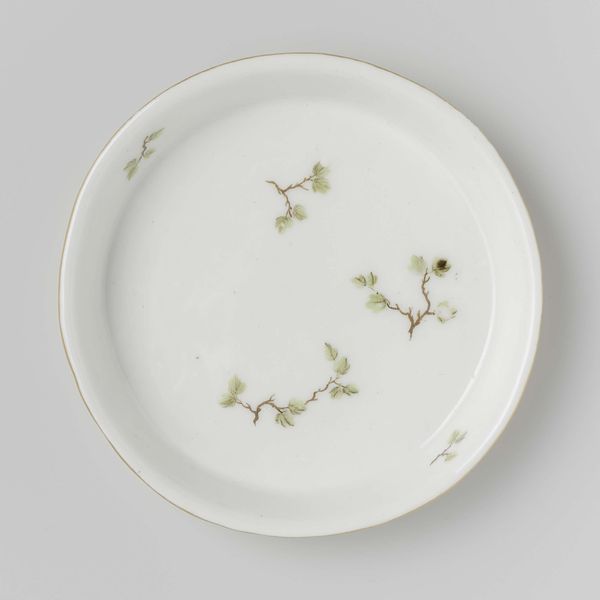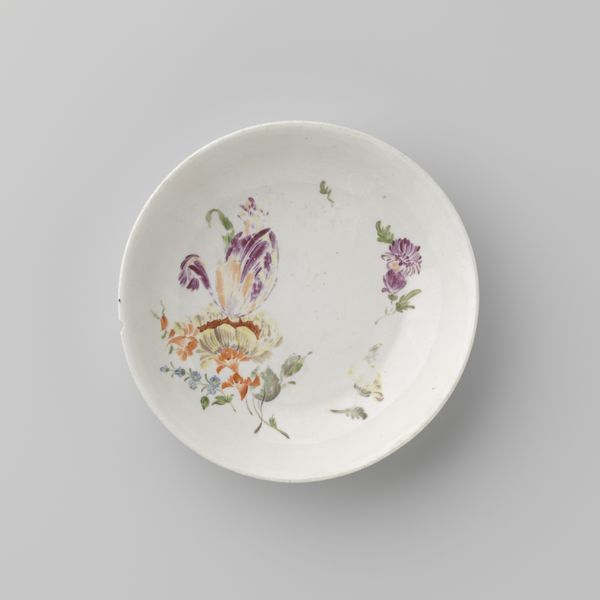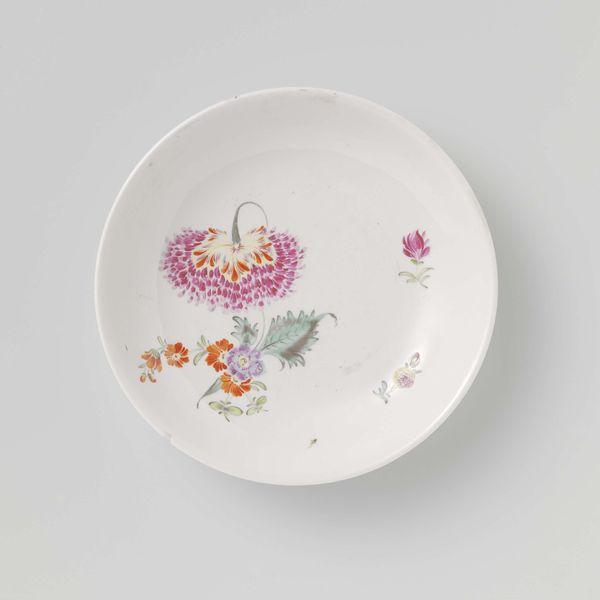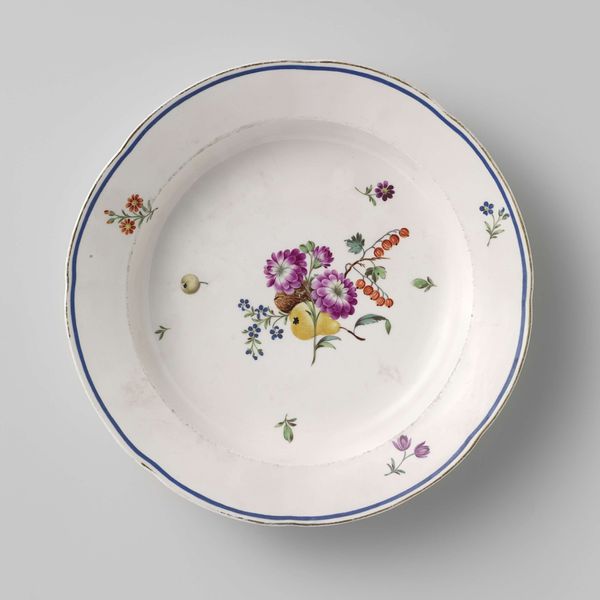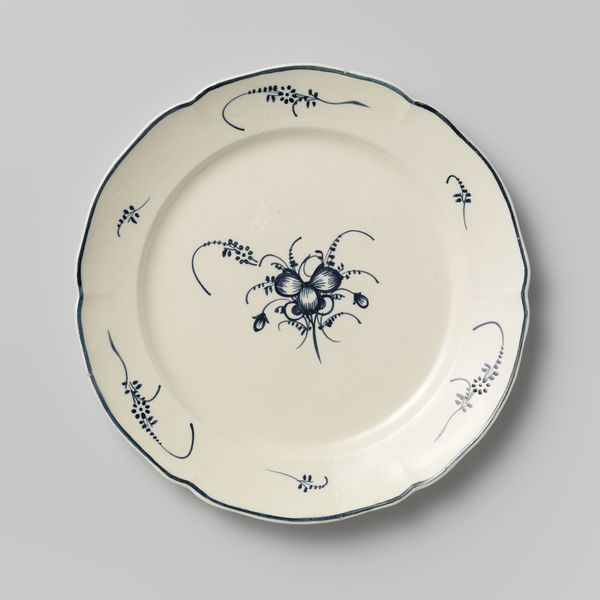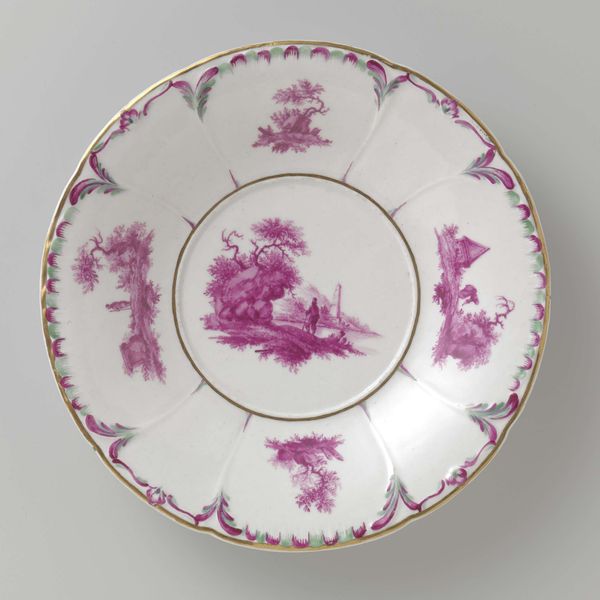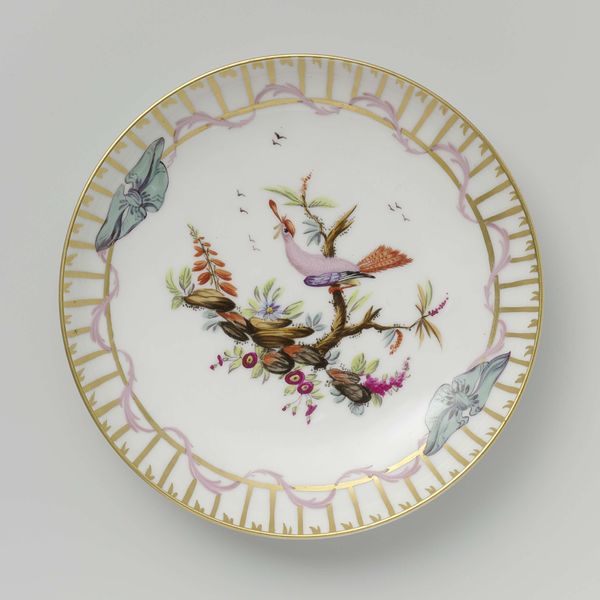
drawing, ceramic, porcelain
#
drawing
#
ceramic
#
porcelain
#
decorative-art
#
rococo
Dimensions: height 4.4 cm, diameter 18.5 cm
Copyright: Rijks Museum: Open Domain
Curator: What strikes me immediately is the delicate melancholy of the colour. It's quite striking, isn't it? It's a pale, washed-out purple, which brings a quiet solemnity. Editor: Indeed. What we’re looking at is a porcelain plate made sometime between 1759 and 1771, decorated with floral motifs in purple enamel paint. The plate came from the Weesper porcelain factory. Curator: Enamel on porcelain, of course, has a particular history. Thinking about labour, gender and art, I wonder about the mostly anonymous painters… probably women, in fact, performing very detailed decorative labour like this? Editor: A valid point. The Rococo period, in which this plate sits so comfortably, saw the decorative arts flourish. But we should ask: At whose expense? This particular plate reflects the fashion of the time. It demonstrates the wealth of the family or individual who might have purchased this item and used it in their household. It is a display of capital in a very literal way. Curator: Exactly. There’s something unsettlingly artificial about that central rose and iris combination; even the “scattered flowers” lack naturalism, which in turn speaks to that control, a very cultivated aesthetic. It is quite pretty but there is something a little disturbing there if you let your mind consider the implications of what that represents. Editor: Porcelain itself was highly valued. The production processes involved significant cost and expertise and the result was intended to delight and to impress guests. This would have been used within a very controlled domestic setting. Curator: I'm struck again by the purple itself, though, in light of this. How it affects the visual impression in ways that belie, or even undermine, those intentions you’ve so aptly described. What do you think about how this porcelain dish might have affected societal values in its time? Editor: Considering its circulation within elite circles, it reinforced existing hierarchies by demonstrating both economic and cultural capital. So this plate reflects prevailing power dynamics even in the most innocuous of flowers. Curator: It seems like an object brimming with social history and commentary just beneath the surface of a single decorative object. Thank you for sharing your expertise. Editor: And thank you for those crucial critical questions and frameworks!
Comments
No comments
Be the first to comment and join the conversation on the ultimate creative platform.
